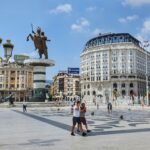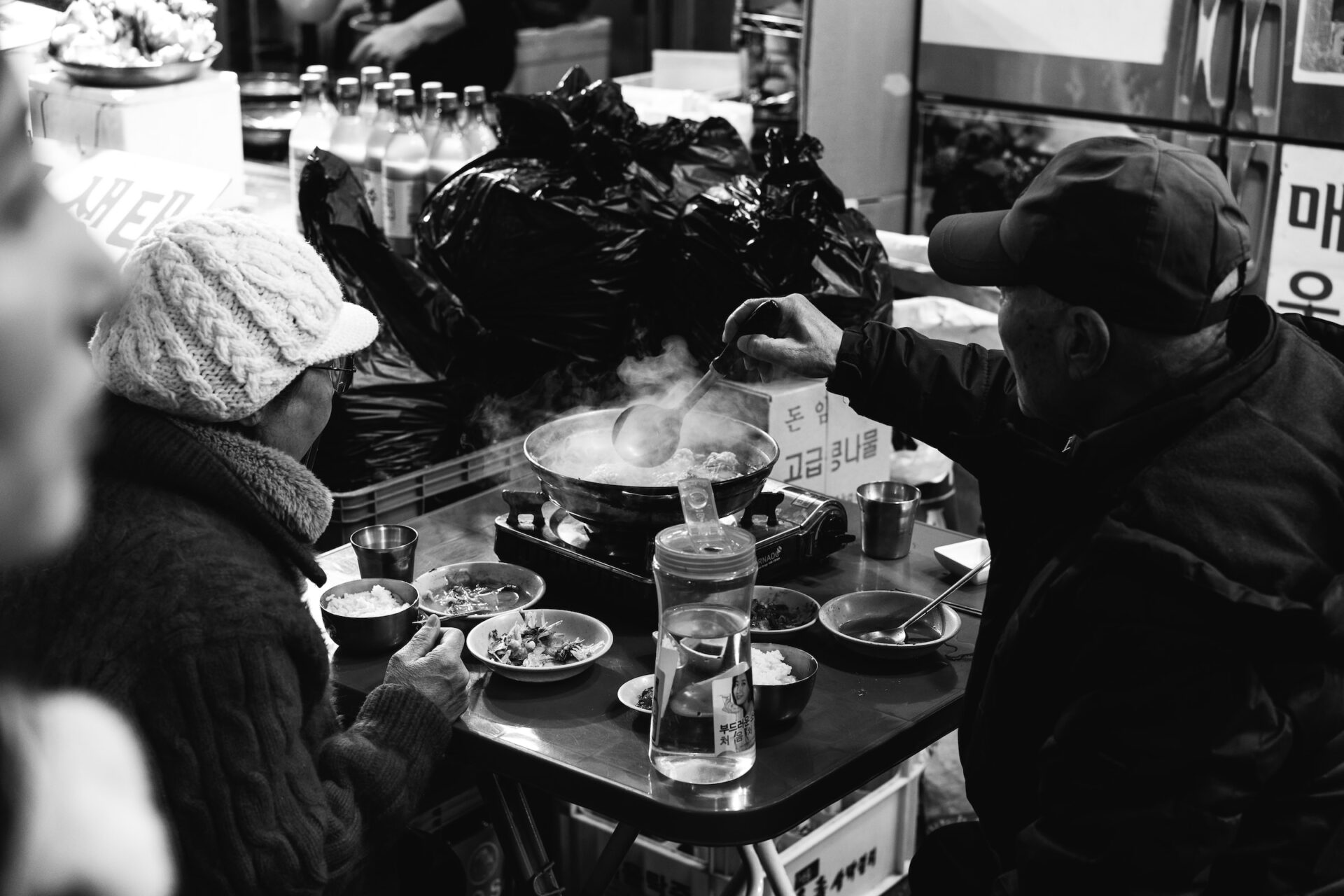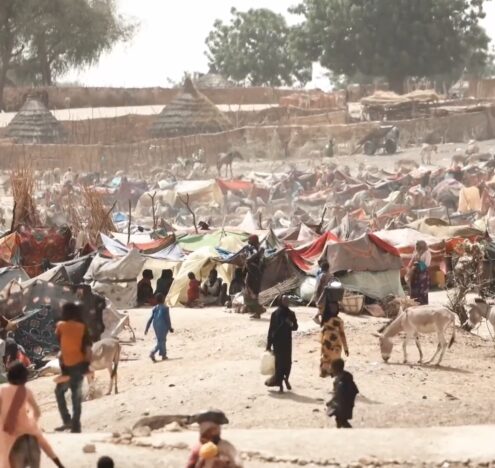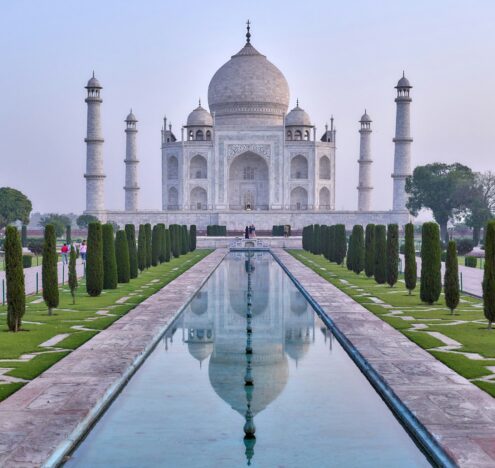A recent state visit by South Korean President Yoon Suk-Yeol highlighted the importance of the US-South Korean relationship. At a time when tensions in East Asia are running high over North Korea’s ongoing tests of its nuclear arsenal, Yook’s visit underscored the challenges democratic governments face when an authoritarian state rattles its nuclear saber. It also used the soft power of food to bring the two world leaders together.
Between sessions with senior US diplomats about the peril that a nuclear-armed North Korea poses to the Korean Peninsula, the South Korean president and his delegation were treated to official luncheons at the Department of State and a state dinner that featured a gastronomic feast meant to please the guest of honor and to catalyze dialogue among those who participated. The meal was prepared by the Korean American celebrity chef Edward Lee with the White House staff. It featured dishes that were a fusion of Korean cuisine flavors overlaid with locally grown foods, such as Maryland blue crab.
But the dinner was also a way to build trust as both nations seek to deter North Korea from escalating its weapons of mass destruction. This traditional act of culinary diplomacy, with all the fanfare it attracts from the local and international press, underscores why the communal table is considered a place for conversation and peacebuilding.
South Vs. North Gastrodiplomacy
In the 70 years since the end of the Korean War, the peninsula remains divided at the 38th parallel. There has never been a peace agreement ending the war — and the contrasts between North and South could not be more striking. South Korea is a flourishing economic international powerhouse, while North Korea languishes in economic stagnation. Headed by a brutal authoritarian leader, Kim Jong Un, the country of 26 million people operates with high levels of secrecy. Poverty and food insecurity are the norms except for a small cadre of loyal officials, Communist Party members, and Kim’s family.
Despite these contrasts, both North and South Korea have created their ways of using food as soft power. South Korea has a very ambitious gastrodiplomacy program started under President Moo Hyun Rho with the goal of transforming the Korean brand. President Lee Myung Bak expanded the program, renaming it “Global Hansik: Korean Cuisine to the World.” It helped to popularize Korean food, promote exports, and support tourism. What sets gastrodiplomacy apart from culinary diplomacy is its emphasis on communicating with middle-class consumers around the world.
North Korea has a humbler version of gastrodiplomacy. It uses state-owned restaurants to appeal to tourists and businessmen from South Korea and China, who patronize the eateries to get a taste of dishes that were once a part of the region’s culinary heritage. After all, food is part of the culture and collective memory that even a border dividing the two countries cannot erase.
North Korean restaurants in Seoul are a genuine form of gastrodiplomacy. They are operated by defectors from the North, refugees displaced by the civil war of the 1950s, and nostalgic for food from back home.
South Korea’s gastrodiplomacy is well-known and is a result of careful planning by the government to support trade and tourism. It is also bolstered by a large Korean diaspora that has contributed to the expansion of its national cuisine to other parts of the globe. “Kimchi diplomacy,” as it is commonly called, has made an impact among chefs and food enthusiasts from the United States to Europe and other parts of Asia. And the success of this effort to popularize Korean food, especially the beloved fermented cabbage, or kimchi, and other barbecue dishes like bulgogi and mantu (dumplings) has created a global following that only continues to expand, along with the popular culture of K-pop and more. The literature about this branding effort is rich and well-documented.
However, the same is not true for the North. There is little information about these establishments in the literature. But lest you think that weapons of mass destruction are the only way that North Korea stands out from the crowd, look no further than the kitchen, where a culinary offensive by the Great Leader has made the kitchen the new venue of foreign policy. Let me explain. North Korea has used its cuisine to build a chain of restaurants around Asia, the Middle East, Australia, and Europe to attract tourists but also to rake in hard currency as visitors enjoy a menu that features iconic North Korean dishes and entertainment to boot. UN sanctions on North Korea (for violation of the Non-Proliferation Treaty by continuing to test nuclear weapons) are hampering this effort, even though some countries like China and Cambodia tolerate these eateries.
Yet, these eateries are not what we have come to know as gastrodiplomacy programs. North Korea owns 130 restaurants in 12 countries, all operating under the name of “Pyongyang,” with one exception for its Beijing location. But these restaurants are much humbler in their objectives. They are not really a branding effort or a way to promote tourism. North Koreans use their cuisine abroad to gain resources that feed the personal coffers of the Great Leader Kim and his family. In contrast to the robust gastrodiplomacy of South Korea, with its impressive work in promoting Korean cuisine to the world and expanding the reach of the flavors of its popular kitchens, the efforts of the North have no bearing on the important work that South Korea has done to promote the peninsula’s cuisine.
According to Jenny Town, director of the 38 North Project at the Stimson Center and an expert on North Korea’s government, the “money goes to Office 39, more a focal point of efforts to procure hard currency from overseas sources for government purposes including the WMD [weapons of mass destruction] program.” Restaurants in Moscow and Beijing are well-known by international intelligence agencies as places where spies use the venues for information exchange, according to Paul Goldstein, a national security expert on East Asia. And that is why these eating establishments violate UN Security Council sanctions.
What Is On The Menu?
There are two types of foods offered at all North Korean restaurants. Food for the masses includes stews made of dog meat. But there is also an effort to promote the historical foods of the old royal kitchens, the most famous dish being sinseollo, a complex soup with seafood such as prawns and sea cucumber. South Koreans who dine abroad and Chinese customers are all interested in tasting these authentic North Korean dishes. In some cases, to appeal to the Chinese market (since most restaurants are there), North Korean chefs mention that many of the dishes served have Chinese roots dating back to the Qing dynasty.
North Korean restaurants in Seoul are a genuine form of gastrodiplomacy. They are operated by defectors from the North, refugees displaced by the civil war of the 1950s, and nostalgic for food from back home. These small eateries in Seoul offer comfort in the form of nourishment. More recently, however, they have also become popular among younger South Koreans who see these places as ways to taste the foods of yesteryear.
When I reached out to Korean friends Jongdae (JD) Kim, the grandson of former South Korean President and Nobel Peace Prize winner Kim Dae-Jung and his wife Grace Choi, who run a nongovernmental peacebuilding organization, Re’Generation Movement, they said that these restaurants are important because “it is a form of people-to-people diplomacy, and those who visit are having a culinary experience,” not a political one. “There are few ways for South Koreans to meet North Koreans,” says Choi, “Foods of the North evoke memories from times before the Korean peninsula was divided in 1945.” In Siem Reap, Cambodia, for example, busloads of tourists arrive daily to partake of a classical North Korean menu that includes dog and cold noodle soup, Naengmyeon, a specialty of Pyongyang.
In North Korean restaurants, women servers prepare dishes and provide entertainment like singing, dancing, and playing traditional instruments. According to a US journalist who visited the Pyongyang restaurant in Siem Reap, servers would not answer questions and seemed to be closely watched by male minders who ensured that they had little contact with customers aside from serving them their meals.
JD also pointed out that Neungra Bapsang, a North Korean restaurant in Seoul, is so popular that it even appeared in an episode of the Netflix food series, “Somebody Feed Phil.” Not only does this restaurant prepare dishes of the North that have been designed to accommodate South Korean palates, but the owner of this small establishment, Lee Ae-ran, is a defector who has made the study of the North’s food and culture part of her life. She only hires other women defectors to work with her, so the restaurant offers a sanctuary for those making the transition to a new life in Seoul. “It is fascinating to hear the discussion with Phil and the restaurant owners as they discuss their menu in the context of North Korea’s closed economy,” says Choi.
But not all defectors’ cases have a similar ending. In 2016, North Korea accused South Korea of kidnapping 13 of its citizens who had been working in a restaurant in China. This diplomatic incident between North and South Korea revealed that workers chosen to go abroad were children of the North’s administration elites. They were seen as part of the fundraising machinery that supports the government; thus, the loss was even more insulting. The defectors themselves, however, were able to escape, despite their being under close surveillance by supervisors. The incident was illustrative of just how integrated the businesses are with high-ranking government officials in North Korea.
Can A Bowl Of Cold Noodles Build Peace?
In 2018 at the start of the Inter-Korean Summit North Korean Supreme Leader stepped over the boundary line of the De-Militarized Zone (DMZ). Kim gifted South Korean President Moon Jae-in North Korea’s cold noodle dish, Naengmyeon, a cold soup topped with fermented and fresh vegetables. The symbolism of this act of culinary diplomacy was not lost on South Koreans. It was described by Tai Wei Lim, one of the few scholars who have studied North Korea’s food diplomacy, this way: “This is a rare example of how gifted food broke the ice between two parties that are technically still at war. It facilitated conversations, casual exchanges, and even jokes between the top leaders of two countries.”
Items like cold noodle soup have deep cultural appeal and symbolism. The soup was given in the spirit of dialogue between the North and South. This gesture immediately sparked a trend in Seoul and other cities in South Korea for eating this famous Northern noodle soup.
What food can do is provide a bridge to difficult conversations. It can send messages by what is on the menu, like during the Trump-Kim Summit in 2018. Breaking bread together can open new conversations and, hopefully, provide the means to address some of the thorniest problems that have vexed the international community when it comes to North Korea’s threat to international peace and security.
Kim has stated that he would rather have his people live on “water and air” than succumb to international pressure to remove his nuclear arsenal. And that is exactly what is happening in North Korea. Except for a small ruling elite, ongoing food shortages in North Korea will not change. Only when North Korea is willing to resume negotiations to denuclearize its arsenal, which would result in a lifting of UN sanctions, can there be a total reform of the economy to transform the North into a viable state that could provide for its citizens. Until then, the curious gastrodiplomacy of the North will remain a relic of an authoritarian government’s attempt to use its cuisine as statecraft.





















